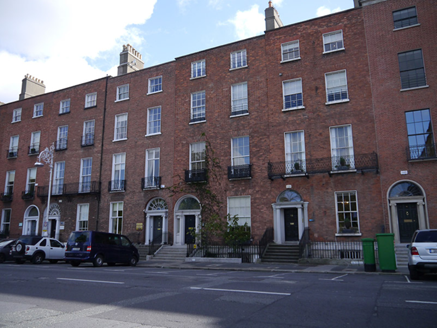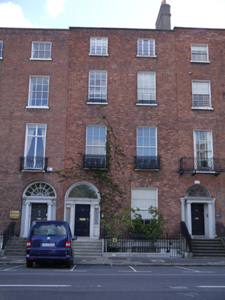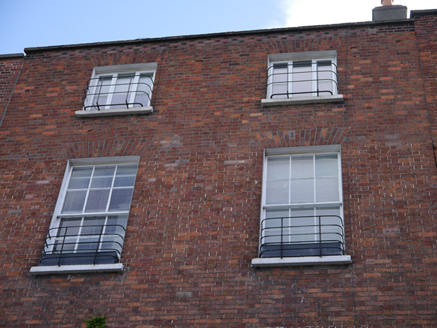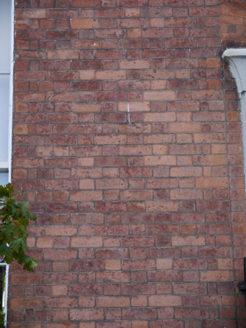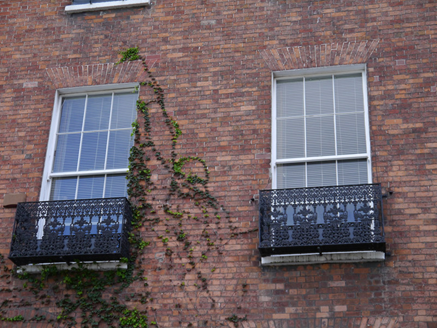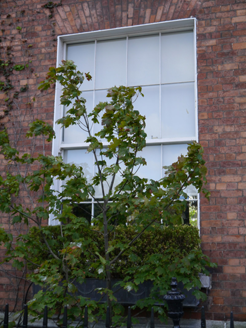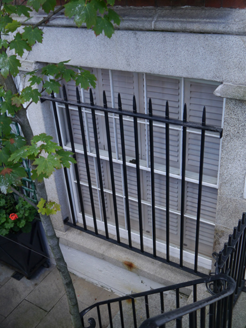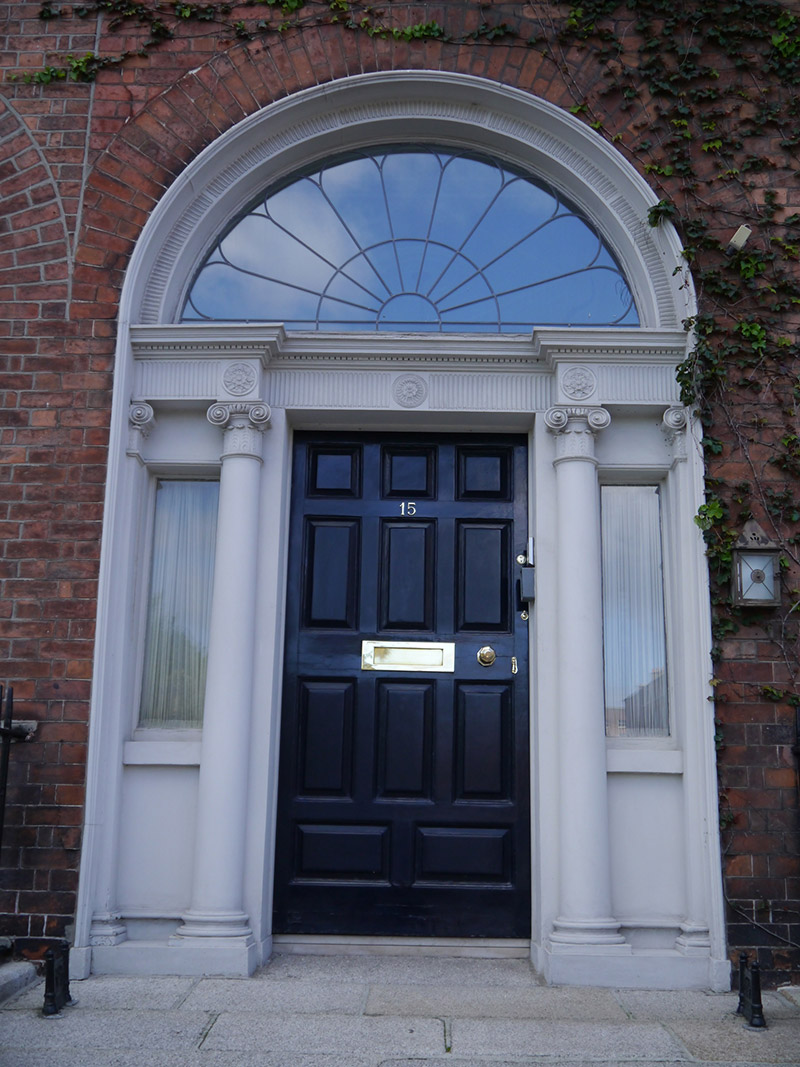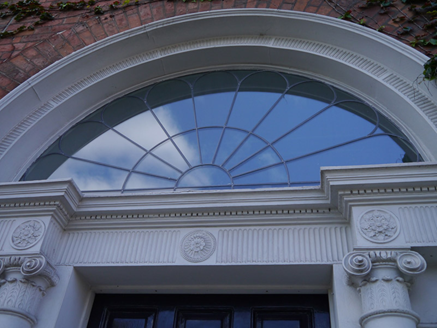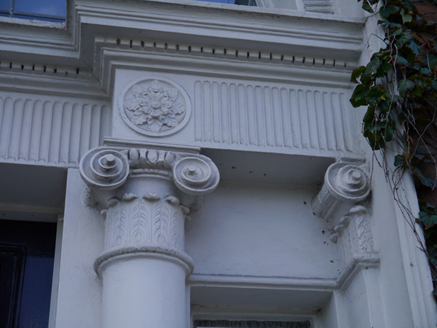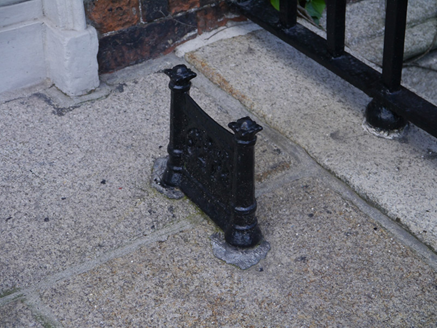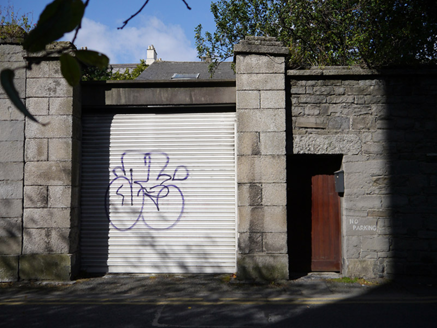Survey Data
Reg No
50930126
Rating
Regional
Categories of Special Interest
Architectural, Artistic
Original Use
House
In Use As
Apartment/flat (converted)
Date
1815 - 1825
Coordinates
316559, 232987
Date Recorded
24/09/2015
Date Updated
--/--/--
Description
Attached two-bay four-storey over basement former townhouse, built c. 1820, with two-stage return to rear. Now in use as apartments. M-profiled roof, hipped to north, concealed by refaced brick parapet with granite coping, rendered chimneystacks with lipped red clay pots to south party wall and parapet gutters. Red brick walling laid in Flemish bond over walling to basement beneath granite plinth course. Square-headed window openings with brick voussoirs, rendered reveals and cast-concrete sills. Granite surrounds to basement. Iron guard rails to third and second floor, ornate cast-iron balconettes to first floor, swagged cast-iron planter to ground floor and steel grille affixed to basement. Largely replacement timber sliding sashes with ogee horns, six-over-six to first floor and without horns to second floor, eight-over-eight to ground floor, nineteenth-century ten-over-ten to basement and tripartite uPVC casements to third floor. Some Wyatt-style windows and oriel window to rear (east) elevation. Round-headed door opening with moulded reveals, engaged Ionic columns flanked by plain sidelights and respond pilasters supporting dentilled cornice and fluted frieze with rosettes, replacement petal leaded fanlight over raised-and-field timber panelled door. Granite entrance platform with cast-iron boot scrapers, approached by five granite steps flanked by iron railings with decorative corner posts over granite plinth, enclosing basement to north. Granite steps with iron handrail to basement level. Coal-hole cover to pavement. Street fronted on Fitzwilliam Square East. Two-storey modernised mews building to rear plot. Ashlar limestone elliptical-headed carriage-arch to eastern boundary on Lad Lane having brick voussoirs, raked coping and steel roller-shutter, abutted by random limestone rubble wall with raked coping and square-headed door opening in brick surrounds with flush timber door.
Appraisal
Mary Bryan (2006) suggests that No. 15 was built for the Rev. Truell, Fellow of Trinity College. It forms part of a relatively intact late-Georgian streetscape with a good Ionic doorcase. Laid out in 1791 by the surveyors J & P Roe, Fitzwilliam Square was the last of the city’s Georgian squares to be completed. Development was staggered, progressing slowly until after the Napoleonic Wars, and between 1816-22 the vast majority of houses were completed on the eastern side of the square. Although largely homogeneous in character and form, the subtle variations between terraces are indicative of the speculative nature of the Square’s development.
